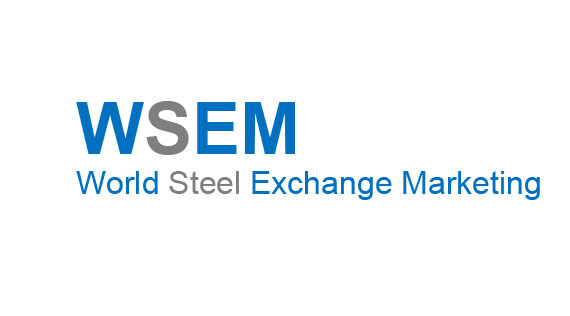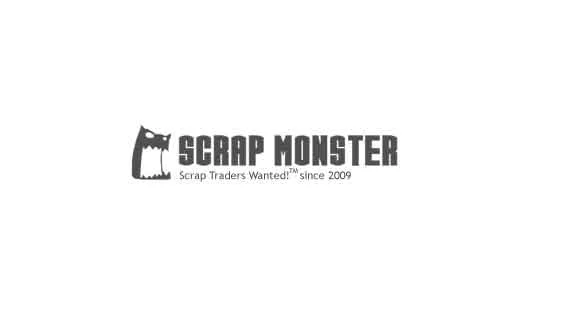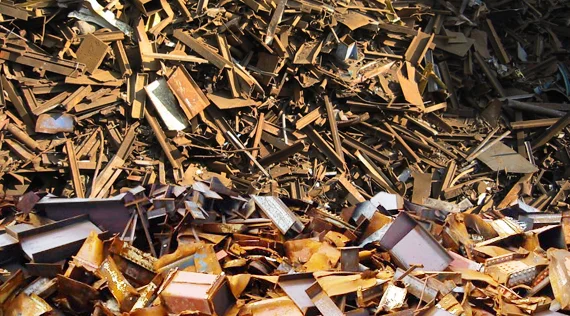The ferrous scrap market has entered the mid-month period when talk about prices falls by the wayside and dealers scramble to find enough scrap to fill the orders. Many are also looking for enough trucks and railcars to carry that material to the steel mills and foundries. That there’s little or no chatter about price changes is no surprise since the biggest moves this month mainly involved $15 per gross ton increases for obsolete grades in Pittsburgh and eastern Ohio, and a one-time, $30-per ton catch-up increase in busheling prices by a small Eastern mill.
Prices for many domestic steelmakers were unchanged from last month’s levels, an indication that the scrap supply and demand may be in balance. Flat-rolled steelmakers are running well, even though their prices have sagged lately. Still, most are operating close to their capacity with order lead times of four to eight weeks for their hot and cold-rolled sheet products. Several long products mills, particularly the small cluster in eastern Ohio and western Pennsylvania, are picking up the slack with stronger sales of steel pipe, tubing and other related products to the oil and gas drillers.
Obsolete scrap supplies are tight and exporters aren’t offering much to U.S. mills.At the same time, dealers in several regions said they are still having problems gathering enough scrap to meet the mills’ current needs. Some anticipate that supply of both obsolete and industrial scrap will not rise much in the coming weeks.
The lack of obsolete supply is surprising to some. It is mid-spring, and normally by this time of the year, heavy melt and shredded feedstock is pouring into dealers’ yards. Yet, several dealers said that they were still behind on last month’s orders, an indication that supplies might be tighter than anticipated. This convinced some mills not to cut obsolete prices this month and/or cancel unshipped orders at the end of April. Doing so would have taken dealers off the hook for those supplies and allowed them to sell that scrap to mills that were short scrap and raising prices this month.
One reason is the absence of a spring scrap tsunami that many brokers and mills have seen in most years past, and had expected to see in April and again this month. Dealers argue that the mild winter weather and absence of any major snowstorms kept scrap flowing throughout February and March and didn’t impede their ability to process that material. They also sold much of that scrap in March when obsolete scrap prices rebounded by $40 per ton.
Also, industrial scrap prices soared by as much as $60 per ton that month, opening an even bigger price spread between shredded and bundles and busheling–as much as $90 per ton in some regions. Consequently, said a Midwest mill buyer, he has not been buying much prime steel scrap and is substituting cheaper shredded and plate & structural scrap for it.
Second, there is little or no demand from the overseas market, a key outlet for much of the nation’s heavy melt and shredded scrap. There have been no new bulk cargo sales to steelmakers in Asia and in Turkey in almost two weeks. Turkish mills, the biggest offshore ferrous scrap buyers, have bought scrap from European suppliers and are avoiding the U.S. market. Prices are unchanged at $275 per tonne for 80/20 heavy melt delivered to a Turkish port, the same price as the last sales to Turkish
mills by U.S. suppliers.
U.S. East Coast exporters have raised their buying prices by as much as $10 per ton in recent weeks to keep some local scrap from going inland to domestic mills. They are paying $205 per ton to smaller local yards for export heavy melt and an average of $225 per ton to their larger and distant suppliers, but these offers are still below the prices paid by domestic mills. Even the Eastern mills are higher at $250-$255 per ton for the domestic quality No. 1 heavy melt and the delivered-to-the-mill prices further inland range from $280 to $290 per ton.
But the docks haven’t been offering much scrap to the inland mills, at least those in the Midwest. Usually, the only scrap U.S. steelmakers will buy from them is shredded, but an East Coast trader said they may only be selling that to the mills in the southeastern U.S. It may be cheaper to ship scrap there by barge, he said, and brokers for these mills also can provide the exporters with their (the brokers’) railcars as well. That minimizes their dependence on major railroads who have complained that they don’t have enough gondola cars. Many of their cars are sitting on sidings or at mills elsewhere in the country, said the trader.
East and Gulf Coast exporters also may be building inventory in anticipation of a buying binge by the Turkish mills before the Moslem holy month of Ramadan, which begins next week. They may have miscalculated, however, as one trader reports that the Turkish mills have plenty of competitive offers from European and Baltic scrap exporters.
Interestingly, the trader also said that the Turks have been importing billet from Russia in the past month at $400-405 per tonne delivered. Scrap at $275 per tonne and a $90-100 per tonne conversion cost to make billet, enables the Turks to produce homegrown billet from scrap at about $365-$375 per tonne. Maybe the reasons for this will become clear at a later time.
Industrial scrap prices up slightly despite weaker flat-rolled steel prices.Busheling and bundles prices were unchanged at many mills except for a few of the Midwest EAF-based flat-rolled producers who hiked their offers by about $10 per ton and several Eastern mills playing catch-up. Those catching-up had lost much of their local industrial scrap supply to rival mills elsewhere who were paying higher prices, and as noted earlier, boosted their busheling prices by $30 per gross ton.
Midwest sheet-makers’ concerns about the likely drop-off in the supply in the upcoming summer months, and the loss of some local scrap supplies to mills in neighboring regions, accounts for the modest $10-per-ton uptick this month. Some also increased the volume of busheling and bundles bought as a hedge against lower scrap supplies.
In addition to the usual seasonal decline in industrial scrap output because of summer vacations, there are also fears that some automakers may extend those closures for another week or two to bring car inventories in line with the current pace of sales. The auto market has led the nation’s economic rebound for the past few years. Sales now are “plateauing”, not collapsing, according to some analysts. One reported that U.S. vehicle sales in April were off by about 7% from a year ago.
Industrial steel scrap prices were unchanged or declined by only $5 per ton at several flat-rolled mills in the South. The decline, which some dealers described as a “sideways” move, surprised several traders who said these mills had bought several cargoes of industrial scrap from suppliers in the UK and northern Europe and were taking delivery of that imported scrap this month. That was expected to provide them with a supply cushion this month and in June, and allow these mills to seek lower prices from domestic scrap suppliers.
However, a Midwest scrap broker said some flat-rolled mills are troubled not only by the slower pace of sales to some automakers and their component suppliers, but also by the decline in purchases of sheet products by steel service centers. The steel warehouses are mirroring a concern about inventories though their reasons may be different from those of the auto industry. Their flat-rolled shipments for the first months of this year totaled 8,942,400 tons, up 3.3% from the same period of last year, but their stocks of sheet steel are 9.7% below last year’s level, according to the Metal Service Center Institute, an industry trade organization.
Also, flat-rolled mills have seen their prices eroding in the past month and a few have reported “holes” in their production schedules. Hot-rolled coil prices are now down to an average of $620 per net ton at the mill. They were over $650 per ton earlier this year. Despite the slower pace, overall domestic steel production has not dropped sharply. Output totaled 1,728,000 net tons last week, according to the American Iron and Steel Institute. That was down 0.5% from the previous week when production was 1,737,000 tons. The industry’s capability utilization rate was 74.1% versus 74.5% one week earlier.
Unless sheet demand plunges drastically in the coming weeks, some dealers and traders said they doubt the mills will try to slash scrap prices. If anything, said a Chicago-based trader, the mills may hold scrap prices, particularly the bundles and busheling prices, at current levels to avoid facing demands from their largest customers for a matching cut in steel prices if scrap prices are lowered. The current downward pace of steel prices, he said, may indicate the start of a price war between rival mills. Some may be lowering their offers to their competitor’s customers to strengthen their own sagging order books. Their rivals are likely to match the lower price rather than lose that business.
Shredded Scrap Thermometer: Shredding the shredders.Several years ago, a prominent scrap executive said he wanted to invent a shredder that would shred shredders. His goal was to reduce overcapacity in the shredding segment of the scrap industry and help some regain the profitability they had given up. The shredder “shredder” has yet to emerge. Scrap processors prefer to “idle” their machines for weeks or months until scrap prices and demand rebound and they can squeeze out profits. Some steelmakers may be taking a different approach to the problem. They are shutting them down, hiring others to operate the machines or moving them to new locations where they will better supply their mills. There are several reasons for these actions:
• Steel mills make and sell steel products primarily. Operating a shredder some 500 miles or 1,000 miles away from their mills doesn’t support those efforts. The shredded produced at these distant sites is usually sold to other mills that may be rivals.
• Even if that shredder is well-run and profitable, making shredded scrap for a rival steelmaker is much like making bullets and artillery shells, and then selling them to your enemy to use against you. Not the best battle strategy if the owner-steelmaker is selling scrap at a price below what it is paying at its own mills and can’t ship scrap from its faraway shredders because the freight costs are too high.
• Operating a shredder is more complicated these days. Most scrap processors have added expensive systems to recover nonferrous metals. In the past, these metals were part of the shredder residue and were sold to specialized recyclers like Huron Valley Steel Corp. Some steel mill-owned shredders still do that, but they face the question of whether they should spend a few million dollars to install eddy current recovery systems and gather a few tons of copper and aluminum scrap from their shredder fluff. Many scrap processors have done this, and those valuable metals serve as their profits and enable them to pay a competitive price for shredder feedstock.
Shredding an unwanted shredder might provide the melt shop with a few tons of scrap to re-melt, and selling it probably will recoup only a part of the purchase price or acquisition costs. There are a couple of “wild card” ideas that some steelmakers have played to deal with the costs of owning the “machine that eats itself” –as some operators describe shredders –and still be assured of adequate supplies of fragmented scrap. These include:
• Being an integrated steelmaker meant being vertically integrated to ensure adequate supplies of raw materials like coal and iron ore. The same logic is now being applied by EAF-based mills that bought into the scrap industry in recent years. They have begun to sell off or shutdown scrap processing facilities that don’t contribute to their steel production.
• Gerdau has turned over management of its Baldwin, FL, shredder to rival Nucor’s David J. Joseph Co. Gerdau still owns that shredder and its output will continue to be delivered to Gerdau’s rebar mill in nearby Jacksonville, FL. But the maintenance, labor and feedstock costs now fall on the shoulders of DJJ’s Trademark Metals unit, which is based in Tampa, FL, operates several shredders in that state and has plenty of experience buying materials for its operations.
• Steel Dynamics Industries has decided to move a newer 6,000-hp shredder and make it a captive producer for one of its bar mills. It will replace a smaller older shredder nearby that the steel company also owns.
The Nasdaq Futures Exchange (NFX) expects to start trading in the Midwest US shredded scrap index futures on June 15, 2017. The contract will trade in 20-gross ton units with the prices settled on the 11th day of each month against the TSI Midwest US Shredded Scrap Index published by Platts. For additional information about shredded futures trading, contact John Conheeney at WSEM. His phone number is 201-503-0922 and his email is
jconheeney@wsemgroup.com.





 Member
Member